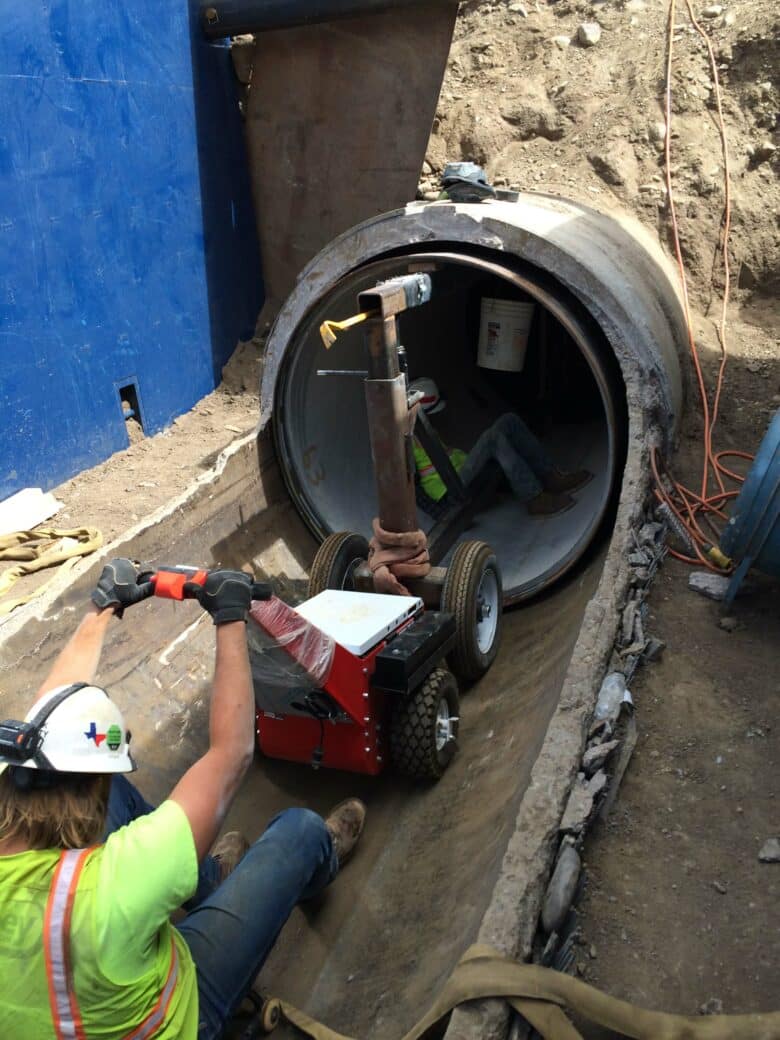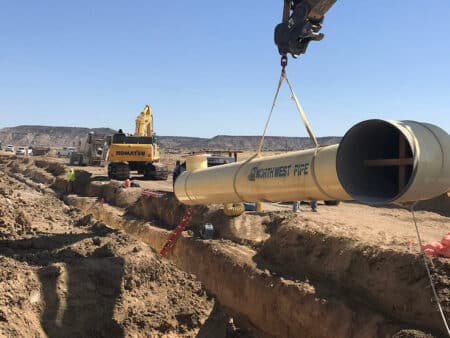Homestake Suction Pipeline Replacement

Pipe Specifications:
Tons:
Owner:
Engineer Firm:
Contractor:
The Homestake Water System transports water under the continental divide through a series of reservoirs, pipelines, and river conveyance to ultimately deliver water to the cities of Aurora and Colorado Springs over 100 miles away. The backbone of the 15-mile system is the 66-inch Homestake pipeline running from an intake on the Arkansas River near Buena Vista to Spinney Reservoir in the South Park area near the town of Fairplay in Colorado. From Spinney, water is delivered to Aurora through a fork of the South Platte River, and to Colorado Springs through its Rampart Reservoir system.
Originally constructed in the mid-1960s with now-defunct non-cylinder prestressed concrete pipe, sections of the Homestake Pipeline have failed catastrophically. Unlike conventional prestressed concrete cylinder pipe produced to AWWA C301 Standard, the non-cylinder type does not include a core steel membrane or bell and spigot Carnegie joint rings; the pipe wall section consists entirely of a concrete cylinder compressed by a mesh of high tensile strength wire.
Over the years, the water authority replaced sections with ready-to-install steel pipe with specially designed joint adaptors, but the need for a more comprehensive condition assessment was evident. Establishing a systematic approach to pipe replacement, five sections of the suction intake line totaling 5,680 LF were given the highest priority for replacement using cement lined, polyurethane coated steel pipe.
The existing pipeline runs through extremely difficult terrain between the Arkansas River and adjacent canyon walls. In some spots, open-cut replacement was too dangerous. In one 1,275 LF section, field crews installed our 60-inch steel pipe using the slipline method within the failing concrete pipe. To accommodate the curve in the existing pipeline, crews used a custom designed cart to transport individual pipe sections into the old pipe. We manufactured the slipline pipe in shorter 10-foot lengths to accommodate the curvature. The slipline pipe pieces were joined with an interior welded bell and spigot joint, and furnished with 3-inch threaded outlets so a threaded plug would center the pipe within the existing concrete pipe. The slipline pipe was furnished bare, or without protective coating. Field crews applied grout via the outlets to passivate the bare steel exterior.
Given the short annual construction season in the high mountains, this five-year established pro-active pipeline replacement program minimized water outage to a few weeks per year, as alternate raw water delivery methods supported Aurora and Colorado Springs.


